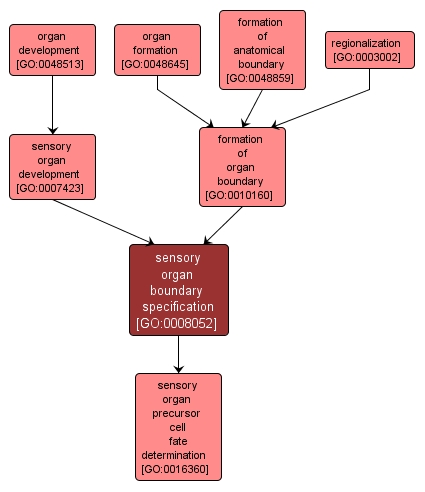GO TERM SUMMARY
|
| Name: |
sensory organ boundary specification |
| Acc: |
GO:0008052 |
| Aspect: |
Biological Process |
| Desc: |
The process by which boundaries between a sensory organ and the surrounding tissue are established and maintained. |
Synonyms:
- sense organ boundary specification
|
|

|
INTERACTIVE GO GRAPH
|














